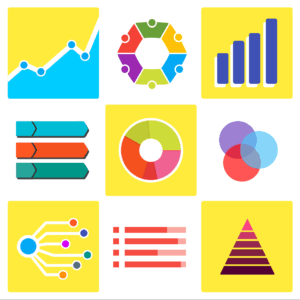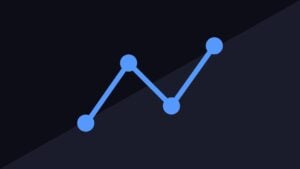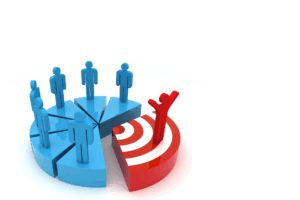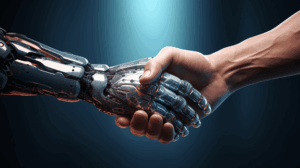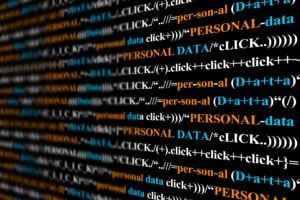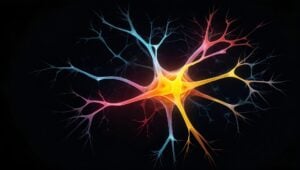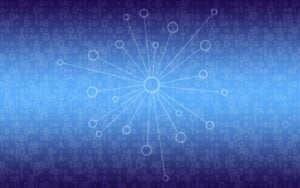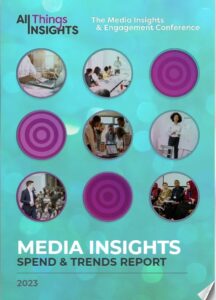1. Defining Human Insights
At its core, a human insight is a deep and non-obvious understanding of people’s behaviors, needs, motivations, aspirations, and the cultural or social contexts that influence them. It goes beyond surface-level observations and readily available data to uncover the fundamental truths that shape human experiences and drive decision-making.
Key characteristics of a strong human insight include:
- Non-Obvious: It reveals something that wasn’t immediately apparent.
- Human-Centered: It is rooted in understanding people and their perspectives.
- Actionable: It provides a clear direction for strategic decisions, innovation, or communication.
- Relevant: It connects to a specific problem, opportunity, or goal.
- Emotionally Resonant: It often taps into underlying feelings and desires.
- Contextual: It considers the broader social, cultural, and environmental factors.
2. Types of Human Insights
Human insights can be categorized based on their focus and the methods used to uncover them:
- Needs-Based Insights: Understanding unmet or latent needs that people may not even be consciously aware of. These insights often drive the creation of entirely new products or services.
- Motivational Insights: Uncovering the underlying drivers and aspirations that influence people’s choices and behaviors. These insights are crucial for effective marketing and engagement.
- Behavioral Insights: Identifying patterns and triggers in how people act, make decisions, and interact with products, services, or environments. These insights inform design and user experience.
- Attitudinal Insights: Understanding people’s beliefs, values, perceptions, and opinions about specific topics, brands, or experiences. These insights guide communication and brand positioning.
- Cultural & Contextual Insights: Recognizing the influence of social norms, cultural values, and environmental factors on human behavior and preferences. These insights are vital for global strategies and understanding diverse audiences.
- Emotional Insights: Delving into the feelings, anxieties, joys, and frustrations that shape people’s experiences and relationships with brands or products. These insights drive emotional connection and loyalty.
- Journey-Based Insights: Mapping and understanding the end-to-end experiences people have, identifying pain points, moments of delight, and opportunities for improvement across the entire journey.
3. Benefits of Uncovering Strong Human Insights
Leveraging deep human insights offers a multitude of benefits for organizations and individuals:
- Fueling Innovation: Identifying unmet needs and desires leads to the development of truly novel and valuable products, services, and experiences.
- Improving Product Development: Understanding user needs and behaviors ensures that products are designed with the user in mind, leading to greater usability and adoption.
- Enhancing Marketing and Communication: Tailoring messages and campaigns to resonate with core motivations and emotional drivers leads to more effective engagement and persuasion.
- Strengthening Customer Relationships: Demonstrating a deep understanding of customer needs fosters trust, loyalty, and advocacy.
- Optimizing User Experience (UX): Identifying pain points and moments of friction in user journeys allows for the creation of seamless and enjoyable interactions.
- Driving Strategic Decision-Making: Providing a deeper understanding of the market, competition, and customer base informs critical business strategies.
- Reducing Risk: By understanding potential pitfalls and unmet needs, organizations can mitigate the risk of launching unsuccessful products or campaigns.
- Creating Meaningful Impact: Solutions rooted in genuine human understanding are more likely to address real problems and create positive change.
- Building Stronger Brands: Brands that connect with consumers on an emotional and needs-based level build stronger and more enduring relationships.
4. Challenges in Uncovering Human Insights
Despite the significant benefits, uncovering genuine human insights is not without its challenges:
- Complexity of Human Behavior: People are complex, and their motivations are often multifaceted and subconscious.
- Bias and Interpretation: Researchers’ own biases can influence the interpretation of data and the identification of insights.
- Distinguishing Data from Insight: It’s easy to mistake data points for true underlying insights. Insight requires synthesis and interpretation.
- Articulating the Unspoken: People may not always be able or willing to articulate their true needs and desires.
- Contextual Understanding: Accurately capturing and interpreting the relevant social and cultural context can be difficult.
- Time and Resource Intensive: Deep qualitative research and analysis can be time-consuming and require specialized skills.
- The “Aha!” Moment: Insights often emerge through a process of synthesis and intuition, which can be unpredictable.
- Organizational Silos: Lack of collaboration between different departments can hinder the sharing and leveraging of insights.
- Rapidly Changing Human Behavior: Social and technological changes can quickly alter human needs and preferences.
5. Applications of Human Insights Across Industries
Human insights are applicable across a wide range of industries and functions:
- Product Development: Identifying unmet needs for new products (e.g., intuitive smart home devices, personalized healthcare solutions).
- Marketing & Advertising: Crafting compelling narratives that resonate with target audiences’ values and aspirations (e.g., emotionally driven brand campaigns, personalized advertising).
- User Experience (UX) Design: Understanding user behaviors and pain points to create intuitive and enjoyable digital and physical experiences (e.g., streamlined website navigation, ergonomic product design).
- Service Design: Mapping customer journeys to identify opportunities for service improvements and creating delightful customer interactions (e.g., personalized concierge services, efficient customer support).
- Healthcare: Understanding patient needs, motivations for healthy behavior, and barriers to access (e.g., patient-centric care models, effective health communication campaigns).
- Education: Understanding student learning styles, motivations, and challenges to create more effective educational programs (e.g., personalized learning platforms, engaging curriculum design).
- Public Policy: Understanding citizen needs, behaviors, and attitudes to develop effective and impactful policies (e.g., designing public health campaigns, improving civic engagement).
- Retail: Understanding shopper motivations, behaviors, and preferences to optimize store layouts, product placement, and the overall shopping experience (e.g., personalized recommendations, seamless online-offline integration).
- Financial Services: Understanding customer financial goals, anxieties, and decision-making processes to develop relevant products and services (e.g., personalized financial planning tools, empathetic customer service).
6. Best Practices for Uncovering and Leveraging Human Insights
To effectively harness the power of human insights, organizations should adopt the following best practices:
- Embrace Empathy: Cultivate a deep understanding of people by putting yourself in their shoes and seeing the world from their perspective.
- Go Beyond the Surface: Don’t rely solely on readily available data. Employ qualitative research methods to uncover deeper motivations and contexts.
- Listen Actively and Observe Keenly: Pay close attention to what people say and do, both explicitly and implicitly.
- Seek Diverse Perspectives: Engage with a wide range of individuals from different backgrounds and experiences.
- Employ a Variety of Research Methods: Combine qualitative methods (interviews, focus groups, ethnography) with quantitative data to gain a holistic understanding.
- Synthesize and Connect the Dots: Look for patterns, contradictions, and underlying themes across different data points.
- Challenge Assumptions: Be aware of your own biases and actively question preconceived notions.
- Collaborate Across Disciplines: Foster communication and collaboration between researchers, designers, marketers, and business strategists.
- Iterate and Validate: Continuously test and refine your insights through further research and real-world application.
- Communicate Insights Effectively: Share findings in a clear, compelling, and actionable way that resonates with stakeholders.
- Build an Insights-Driven Culture: Embed the value of human understanding throughout the organization.
- Ethical Considerations: Always prioritize the privacy and well-being of research participants.
7. Use Cases Illustrating the Power of Human Insights
- Netflix: By deeply understanding viewing habits and preferences (behavioral insights), Netflix developed its recommendation engine, leading to increased user engagement and retention.
- Airbnb: Recognizing the emotional need for belonging and authentic local experiences (emotional and needs-based insights), Airbnb designed its platform to connect travelers with local hosts, disrupting the traditional hospitality industry.
- Procter & Gamble (P&G): Through in-home ethnography (cultural and contextual insights), P&G identified unmet needs in household cleaning, leading to the development of innovative products like Swiffer.
- Apple: By focusing on intuitive user experience and understanding the desire for seamless integration (behavioral and needs-based insights), Apple created a loyal customer base and revolutionized multiple industries.
- LEGO: Recognizing the evolving play patterns and desires of children (developmental and motivational insights), LEGO reinvented its product lines and digital experiences to maintain relevance and engagement.
More Resources on Human Insights
- “Human Insights vs. Consumer Insights: What’s the Difference?” from Bloomfire. If you are in the insights business, you have likely noted a shift in language from consumer insights to human insights. The trend has gained traction to the point that we are seeing it reflected in changing job titles. Does this mean consumers are out and humans are in? What would that even mean? What is the difference between consumer insights and human insights?
- “The Strategic Value Of Human Insights In An AI-Driven Era,” from Forbes. Artificial intelligence (AI) is reshaping industries by processing vast amounts of data, automating routine tasks and enabling quicker decision-making. While AI’s capabilities can be transformative, it’s important to recognize that human insights remain indispensable, particularly in strategic and investment decision-making.
- “Balancing human insight and artificial intelligence,” from Quirk’s. As generative AI continues to be implemented in business practices and decision-making process it is important to combine it with human insight. This article covers the importance to balancing human intelligence and artificial intelligence to make the best decisions possible.
- “As people change, is technology the key to fast human insights at scale?” from Kantar. Brands need deep human insight more than ever. Carefully curated AI and Chatbot technologies can provide quality insights at scale.
Top Human Insights Podcasts
- “Human-Centric AI Podcast,” from Affectiva. The Human-Centric AI podcast features insights from the world’s top thinkers in automotive, market research, aviation, robotics, academia and beyond.
- “Top 20 customer experience podcasts to listen to in 2025,” from Contentful. Great customer experiences (CX) don’t happen by chance — they’re built on insights, innovation, and a deep understanding of what customers truly value. From creating seamless digital journeys to cultivating meaningful human connections, today’s businesses are redefining how they engage and delight their customers.
- “The 12 Best Customer-Centric Podcasts For Businesses,” from bCast. Transform your business approach with these customer-centric podcasts, packed with expert advice on delivering exceptional customer experiences that drive loyalty and growth.
- “Humans of CX,” from Ozonetel. Humans of CX is a podcast on a mission to have conversations with the world’s leading customer experience experts to help CX professionals humanize their approach, placing empathy at the center of the experience.
Video Resources on Human Insights
- “Four Human Insights Every Marketing Research Professional Must Know to Solve Any Business Challenge,” from Greenbook. Understanding human behavior is key to brand growth. Learn four human insights that can be used to unlock brand value.
- “The human insights missing from big data | Tricia Wang,” from TED. Why do so many companies make bad decisions, even with access to unprecedented amounts of data? With stories from Nokia to Netflix to the oracles of ancient Greece, Tricia Wang demystifies big data and identifies its pitfalls, suggesting that we focus instead on “thick data”—precious, unquantifiable insights from actual people—to make the right business decisions and thrive in the unknown.
- “Insights 2021: The Key to Human-Driven Market Research,” from Suzy. Join Laima Widmer, VP of Market Research, Suzy and Phil DeConto, VP, Category Management & Shopper Insights, Ferrero USA for an in-depth conversation on how a leading company is creating a seamless user experience through the art of storytelling and customer-centric design.
- “The Power of Human-Centric Business in an AI World with Gregorio Uglioni,” from Getting to Aha! In this episode of Getting to Aha!, host Darshan Mehta chats with Gregorio Uglioni, a renowned CX expert and three-time bestselling author, about the transformative power of human-centric business strategies in an AI-driven world.
More On This Topic from All Things Insights
- Human Insights is one of the featured categories on All Things Insights. The resource page features a range of helpful information for the insights professional. This includes the science of customer behavior, consumer trends, conversion, cultural anthropology, customer research, diversity and equality initiatives, growth marketing, measurement, media, customer satisfaction, qualitative and quantitative research, user experience, loyalty, and more. This area further looks at the customer journey, consumer experience, extending the consumer relationship, collaboration around the consumer, and more.
- Exploring the Meaning of Human Insights: If you are looking for ways to enhance the user experience of a product or service, digital or otherwise, tapping into human insight is essential to the process. It seems a rather clear-cut statement, but yet just what is the difference between consumer, user and human insights? To create an ideal user experience with a product that is truly meaningful, then UX and product professionals would likely enhance their efforts with a focus on UX that resonates with the presumably human audience.
Driving Human Behavior
Human insights are the bedrock of truly impactful innovation, effective communication, and meaningful customer relationships. In a world saturated with data, the ability to understand the fundamental drivers of human behavior provides a powerful competitive advantage. By embracing empathy, employing rigorous research methods, fostering collaboration, and cultivating an insights-driven culture, organizations can unlock profound understandings that lead to solutions that truly resonate with people and create lasting value. The journey to uncovering human insights is ongoing, requiring curiosity, critical thinking, and a genuine desire to connect with and understand the human experience.
Editor’s Note on Sources: The content generated is based on a combination of Gemini’s knowledge and training, along with information it’s been trained on from a massive dataset of text and code. This includes academic papers, articles, books, and other reliable sources on human insights.
Video courtesy of Getting to Aha!
Contributor
-

Matthew Kramer is the Digital Editor for All Things Insights & All Things Innovation. He has over 20 years of experience working in publishing and media companies, on a variety of business-to-business publications, websites and trade shows.
View all posts











